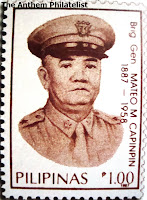"Tayo na sa Antipolo"

Antipolo Pilgrimage is a month-long celebration that brings devotees and pilgrims to venerate the "Our Lady of Peace and Good Voyage" which is enshrined in Antipolo Church in Antipolo City. This is annually celebrated every month of May.
It is during the month of May when Filipino devotees to the Blessed Virgin Mary from different parts of the country throng on the hills of Antipolo to make a pilgrimage at the shrine of Nuestra Señora de la Paz y Buenviaje (Our Lady of Peace and Good Voyage).
The folk song “Tayo na sa Antipolo” vividly captures the festive air of this season in this rural town some decades ago. 'Tayo na sa Antipolo' 'at doo'y maligo tayo' 'sa batis na kung tawagin' 'ay Hi-hi-hinulugang Taktak' 'at doo'y kumain' 'ng mangga' 'kasuy at balimbing' 'kaya't magmadali ka at' 'tayo ay sumama sa Antipolo.'
The pilgrimage is a month-long celebration that sees devotees trekking up a much-trodden path leading to the religious shrine, more popularly known as the Virgin of Antipolo. The image is believed to be already three hundred years old and is said to manifest miraculous powers. According to historians, the venerated icon had on more than one occasion saved her galleon from wreckage by Dutch and British blockades, as well as pirates, while it sailed between Manila and Acapulco.
It is every 30th of April, the eve of May 1, that pilgrims make the trip. Afterwards, the usual side trip would be to Hinulugang Taktak, a waterfall just outside of town. It was made a National Park in the 80s.
The most stereotyped Antipolo-pilgrimage scene was that of a woman lying comfortable in a hammock or duyan while in her Maria Clara gown. Hammock was the Antipolo Transportation System. There were no roads to Antipolo –only footpaths. The most fashionable way to traverse the seven hills to Antipolo was in these primitive hammock-carriages. They were the original Philippine pedicabs.
However, the extinction of the hammock came when the railway transportation in the Philippines extended it line all the way to Antipolo in 1908. By the 1920s the trip could be made by car in a couple of hours, but he nine-day stay in Antipolo was still a de riguer. So the family took along supply of clothes, beddings, food and liquor; rented part of a house and crowded into one or two rooms.”
The stamp above is a painting by Carlos "Botong" Francisco, Pilgrimage to Antipolo. One can also see musical notation of the song "Tayo na sa Antipolo" composed by German San Jose (Gerry Brandy) in 1929.






